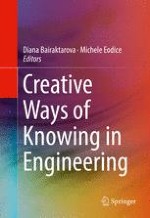2017 | OriginalPaper | Buchkapitel
The Engineers’ Orchestra: A Conductorless Orchestra for Our Time
verfasst von : Diana Dabby
Erschienen in: Creative Ways of Knowing in Engineering
Aktivieren Sie unsere intelligente Suche, um passende Fachinhalte oder Patente zu finden.
Wählen Sie Textabschnitte aus um mit Künstlicher Intelligenz passenden Patente zu finden. powered by
Markieren Sie Textabschnitte, um KI-gestützt weitere passende Inhalte zu finden. powered by
